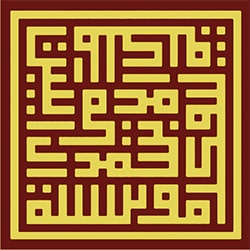External Relations
The Institute established working relations with various Arab and international institutions and research centres, resulted in:
1. Cooperation with Cambridge University Library in publishing “Index Islamicus”, a major guide for researchers in Islamic civilization founded by Prof. J.D. Pearson. The first volume thereof was published in 1958. It is an indispensable guide for every researcher in the fields of Islamic Civilization because it traces periodically all the books and articles which have been issued about the Islamic languages. Furthermore, the Institute signed an agreement with Cambridge University Library upon which an annual grant was given for ten years, 1982-1991. Since the third issue of volume VI (July 1982) until 1991, all issues of the quarterly “Index Islamicus”, 38 altogether, have been compiled at the University Library, Cambridge, under the auspices of The Aal al-Bayt Institute.
2. Compiling a Guide to Photographs and Documents Pertaining to Jordan (1870-1975 A.D.), in collaboration with the Middle East Centre, St. Antony’s College, Oxford University. The Aal al-Bayt Institute commissioned a specialized researcher to review the “Private Documents Collection” at the Centre with the aim of taking out what is related to Jordan and photocopying it. Subsequently, the Institute had more than three hundred rare photographs which represent various phases of the history of Jordan, some of which were included in a book published by the Institute. It was published by the Institute in 1982. An exhibition for these photographs was also organized by the Institute at its premises in June, 1983. Two guides in both Arabic and English were published in 1986, entitled: “A Guide to Photographs and Documents Pertaining to Jordan (1287-1395 A.H / 1870-1975 A.D.) from the Middle East Centre, St. Antony’s College-Oxford University”.
3. Signing an agreement in 1982 with the Academy of Sciences of Uzbekistan to facilitate cooperation carrying out common research papers pertaining to Islamic civilization and the exchange of manuscripts, publications and catalogues of manuscripts.
4. Signing a protocol with the Institute of Oriental Studies of the Russian Academy of Sciences to exchange manuscripts, books, and scholarly visits, and to encourage translating the research papers of each side pertaining to Islamic civilization and publish them.
5. Compiling an “Annotated Bibliography of United States Government Documents Pertaining to the Hashemite Kingdom of Jordan: (1920-1983)” in cooperation with Alexandria Book Service in the United States of America. The bibliography was published by the Institute in English in 1984. This book comprises an annotated bibliography prepared by specialised researchers in the field of classifying and cataloguing under the supervision of Dr. George Atiyya, the Library of Congress, of the distributed documents in the major libraries in the United States pertaining to the Hashemite Kingdom of Jordan.
6. Publishing of “Treasures of Jerusalem”, a book comprising a full description of Muslim, Christian and Jewish religious sites in old Jerusalem, with the participation of Engineer Ra’ef Najm who coordinated among its writers.
7. Concluding an agreement with the Arab Bureau of Education for the Gulf States and ALECSO in Tunisia, for cooperation in carrying out the educational thought project which the Institute had already planned for. Consequently, the Arab Bureau of Education for the Gulf States published “Prominent Muslim Educationists”, in four volumes. ALECSO published “Arab Islamic Educational Thought: Origins and Principles”, in one volume, while The Aal al-Bayt Institute published “Arab Islamic Education: Institutions and Applications” in four volumes.
8. Cooperating with the Islamic Academy of Sciences, Amman, Jordan, since 1991 in publishing the Arabic version of the quarterly journal “Islamic Thought and Scientific Creativity”, this used to be published in English by COMSTECH in Pakistan.
From 1991 to 1997, 20 issues were published in Arabic jointly by the Institute and the Academy. Publication of the Arabic version was discontinued owing to the discontinuance of the English version of the same journal.

